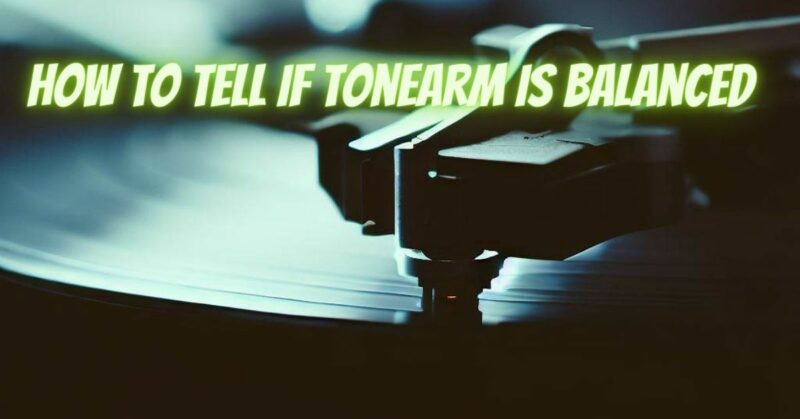Achieving proper balance of the tonearm on your turntable is a crucial step in ensuring accurate tracking, minimizing wear on your records and stylus, and optimizing sound quality. A balanced tonearm allows the stylus to track the grooves of the vinyl accurately, resulting in a clear and faithful audio reproduction. In this article, we’ll guide you through the process of determining whether your turntable tonearm is balanced correctly.
Signs of Proper Tonearm Balance
When the tonearm is correctly balanced, you should observe the following signs:
- Floating in Midair: When you lift the tonearm and release it, it should float in midair without any resistance or dropping abruptly.
- Level Position: The tonearm should maintain a level position, neither tilting upward nor downward when suspended.
- Counterweight Position: The counterweight should be positioned along the tonearm’s counterweight shaft, with the tonearm neither rising nor falling due to imbalance.
- Stylus Contact: If your turntable has a cueing lever, when you engage it, the stylus should gently touch the record’s surface without any forceful impact.
Steps to Verify Tonearm Balance
- Prepare the Turntable: Ensure that the turntable is properly set up and placed on a stable surface. If your turntable has a dust cover, open it to allow access to the tonearm.
- Lift the Tonearm: Gently lift the tonearm from its rest and let it hover freely above the turntable.
- Observe Movement: Pay close attention to the movement of the tonearm. It should move smoothly and float in the air without dropping suddenly or feeling overly heavy.
- Tilt Check: Look at the tonearm from the side and observe its position. It should maintain a level, horizontal orientation without tilting upwards or downwards.
- Counterweight Position: Verify that the counterweight is positioned along the counterweight shaft and not causing the tonearm to rise or fall.
- Cueing Lever Test: If your turntable has a cueing lever, gently engage it to lower the tonearm onto the record. The stylus should make contact with the record’s surface gently and smoothly.
Adjusting Tonearm Balance
If you find that the tonearm is not balanced properly, follow these steps to adjust it:
- Counterweight: Adjust the counterweight’s position along the tonearm to achieve proper balance. Gradually move it until the tonearm remains level and hovers freely.
- Tracking Force: Once the tonearm is balanced, you can proceed to set the tracking force using a stylus force gauge according to the manufacturer’s recommendations.
- Anti-Skate: Set the anti-skate control to the same value as the tracking force to maintain balance during playback.
Properly balanced tonearm is essential for accurate tracking, reduced wear on your records and stylus, and optimal sound quality. By observing the signs of balanced tonearm and following the steps to verify and adjust it, you can ensure that your turntable is set up to deliver the best possible audio experience. Regular checks and adjustments will contribute to the longevity of your equipment and enhance your enjoyment of vinyl records.


